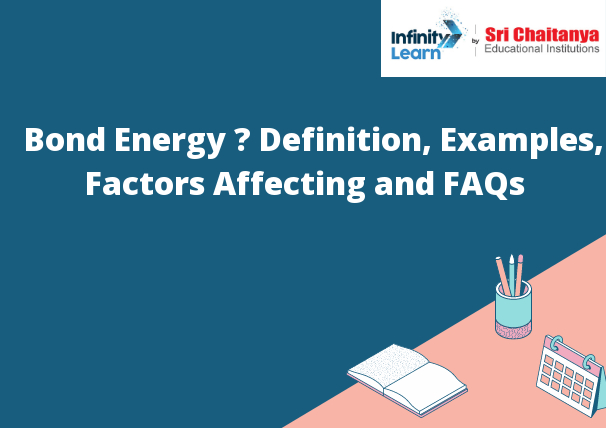Table of Contents
What is Bond Energy?
Bond energy is the amount of energy required to break a bond between atoms. The higher the bond energy, the more difficult it is to break the bond.

Bond Energy Examples
- In chemistry, bond energy is the energy required to break a bond and form two atoms or molecules. It is usually measured in kilojoules per mole (kJ/mol).
- There are several types of bond energies. Covalent bond energy is the energy required to break the covalent bond between two atoms and form two separate molecules. Ionic bond energy is the energy required to break the ionic bond between two atoms and form two separate ions. Hydrogen bond energy is the energy required to break the hydrogen bond between two molecules and form two separate molecules.
- Bond energies can be used to calculate the enthalpy of a reaction. The enthalpy of a reaction is the energy released or absorbed by the reaction.
Comparison Between the Bond Energy & Bond Dissociation Energy
The bond energy is the amount of energy required to break a bond. The bond dissociation energy is the amount of energy released when a bond is broken.
Example of a Bond Energy & Bond Dissociation Energy of the Hydrogen-Oxygen Bond in a Water molecule
The bond energy of the hydrogen-oxygen bond in a water molecule is 463 kJ/mol. The bond dissociation energy of the hydrogen-oxygen bond in a water molecule is 335 kJ/mol.
Factors Affecting Ionic Bond Energy
- The ionic bond energy is affected by the size of the ions, the type of ions, the charge on the ions, and the distance between the ions.
- The ionic bond energy between two atoms is affected by a number of factors, including the type of atoms involved, the distance between the atoms, and the strength of the electrostatic forces between the atoms.
- The type of atoms involved in an ionic bond affects the strength of the bond. For example, the ionic bond between two sodium atoms is weaker than the ionic bond between two potassium atoms.
- The distance between two atoms affects the strength of the ionic bond. The closer the atoms are to each other, the stronger the bond will be.
- The strength of the electrostatic forces between two atoms affects the strength of the ionic bond. The stronger the electrostatic forces are, the stronger the bond will be.






